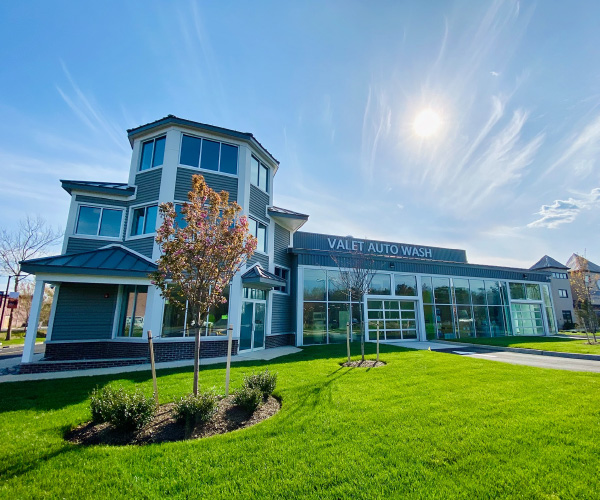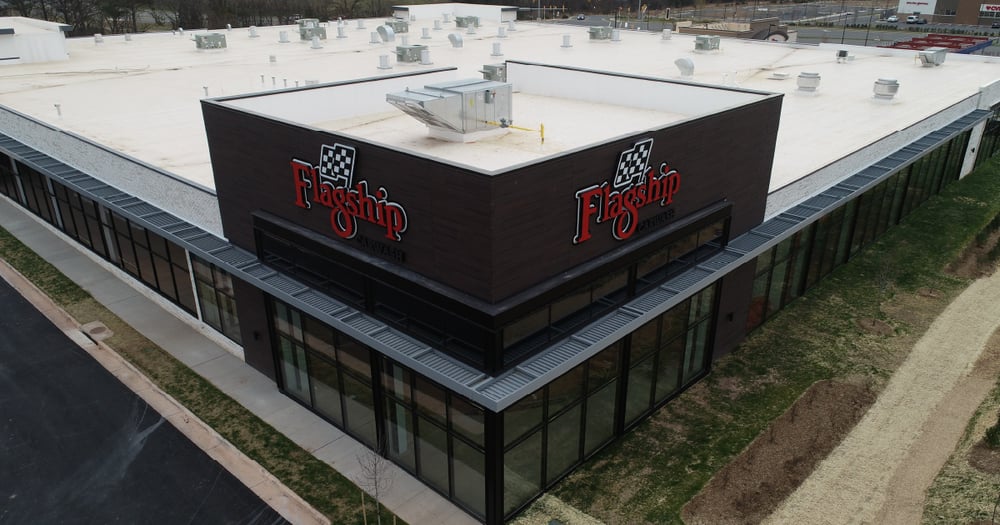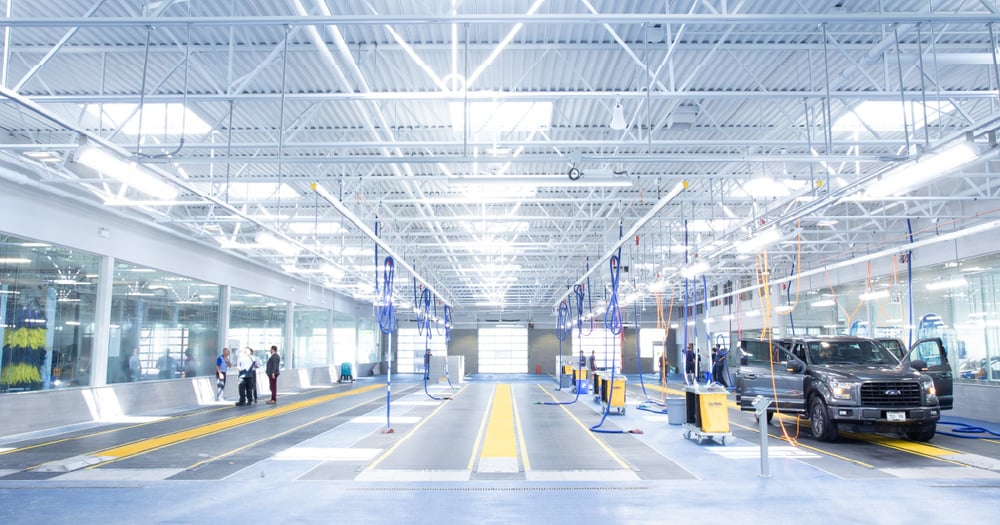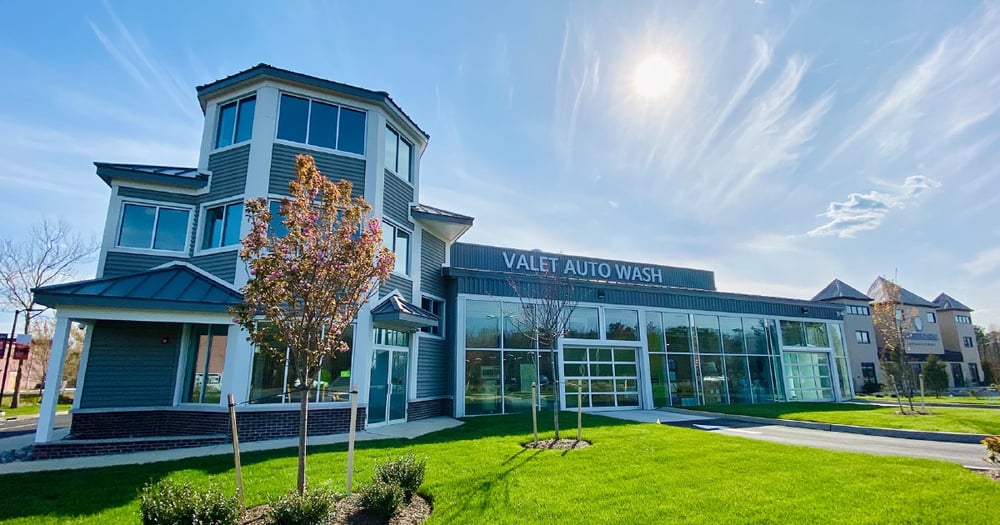
Rise of the Megawash
November 13, 2023
5 minute ReadWashes that redefine the typical square-footage guidelines are evolving — and finding a football field-size niche in the car wash industry.
If you’re accustomed to the typical tunnel car wash, your first encounter with a so-called megawash may be startling. Designed for high-volume traffic, these enormous facilities simply dwarf the competition.
Take Flagship Carwash One Loudoun in Ashburn, Va. It’s known as the largest indoor car wash in the United States, and with good reason. The climate-controlled facility offers side-by-side double wash tunnels, nearly two dozen vacuum stations, almost a dozen bays for detailing, and several conveyors dedicated to interior cleaning. And it’s all inside a 65,000-square-foot building.
To put that in perspective, you could easily drop an entire football field – including the end zones – into that much space, and still have 7,400 square feet left over.

So what’s driving the trend? According to Christian Seem, chief operating officer at Spotless Brands, the owner of Flagship Carwash, it’s pretty simple: the customer’s investment in time.
Donnie Hinton, the founder of Flagship Carwash, explained, “These sites are designed to get cars clean, inside and outside, within 13-14 minutes – not the usual wait of 40-50 minutes for the same level of service.”
These sprawling footprints also enable wash operators to derive more revenue – by providing a multitude of atypical services.
Finding Your Differentiators
Atypical services and a multitude of them are two of the ways megawashes are able to differentiate themselves from other car washes, which is key in securing market share, media and members.
“You need to provide products and services that the other guys can’t and make sure your customers get more value for their memberships,” said Justin Young, director of marketing at Splash Carwash, a 38,000-square feet facility in Maumelle, Ark.
Young said that Splash’s megawash facilities include indoor play parks for kids. “We’ve found it’s a great way to appeal to ‘minivan moms.’ In fact, it’s common for families to actually arrange play dates at the car wash.”
Splash also provides electric vehicle charging stations in the indoor vacuuming area, enabling customers to get some extra juice before they leave. “They’re high-powered stations and can fully charge a battery in about 30 minutes,” he said.
And Seem pointed out that the convenience of having everything under a single roof makes it easier for customers to use these services.

Matt Tehrani, COO at Drive & Shine Car Wash, said, “We offer oil changes and full-service detailing, but one of our key differentiators is our 20 indoor self-service vacuums.” The vacuums are set up to allow customers to use one hose on the driver side, and another to clean out the passenger side. There are also mat-cleaning machines and microfiber towels to wipe the cars down. “And it’s all inside a climate-controlled facility; most typical car washes keep the vacs outside, where customers must deal with heat, cold or precipitation,” Tehrani said.
At Auto Spa, which operates in the Ontario, Canada, cities of Mississauga and Burlington, amenities include an on-site gas station, detailing, a luxurious lounge with comfortable seating and a 120-inch television and a Starbucks café. The wash also partnered with Uniglass to offer Xpel stone glass film, ITEKT windshield ceramic coating, and window repair services; and Jiffy Lube, for oil-change services.
“A customer’s first draw is the car wash experience,” said Auto Spa owner Ehab Shaheen. “Once you have captured that customer, you can introduce them to your other on-site services. Eventually, it becomes their habit to return.”

Location Questions
As with any retail operation, location plays a part – but with megawashes, it can be a smaller part than expected. Drive & Shine car wash has been around for about 30 years, and the company has 15 locations in Indiana and Michigan; their largest is 25,000 square feet.
“We recently opened a mega facility in a rural area with a population of about 15,000-20,000 people and it took off from day one,” Tehrani said. “While the majority of our customers are probably locals, we know that many others come from surrounding areas. It’s evidence that underserved communities are able to support larger businesses.”
Tehrani added that Drive & Shine’s solid reputation and membership programs have contributed to its success.
It’s important to note that many huge facilities don’t operate in isolation. Both Flagship and Splash use their megawash facilities as hubs that connect to their network of express washes. Membership fees cover services at all locations, so drivers can easily opt for a basic wash-and-dry experience, a full interior/exterior cleaning and detailing, or any offering in-between.
But the market area is only part of the equation. Whether city or suburbs, you still need a sizeable place to put it. Some owners have found a solution: abandoned buildings with the potential for upcycling.
Raymond Cerwinksi, senior director of maintenance at Valet Car Wash, said the company looks for big boxes like deserted Toys ‘R’ Us stores or old bowling alleys. In fact, Valet’s fully enclosed 55,000-square-foot facility, complete with a 245-foot-long tunnel; 24 indoor self-serve vacuum stalls; an indoor polishing tunnel and two flat-belt conveyors for interior services, is housed inside a converted warehouse.
Neither the purpose-built nor conversion approach is cheap, he said, but Valet prefers unused buildings, even though you might be constricted by the building's layout. “You’ve mitigated weather delays, and have immediate site security because the building itself is already in place. We’ve also found that improving eyesores can help expedite the permit process,” he said.
Tehrani, on the other hand, prefers purpose-built. “We’ve bought other washes and couldn’t adapt them to our required footprint – so we ended up knocking them down and building exactly what we needed,” Tehrani said.

Fantasy vs. Reality
If you’re considering investing the necessary time and capital in a megawash, Young suggested touring existing facilities to get a sense of how they operate. “It’s easy to fantasize when you think you know what’s coming, so it’s really helpful to actually see one,” he said.
And if you proceed, Shaheen said, “Be sure to plan and design carefully. You need to ensure smooth traffic flow because of the higher volume, and that includes the layout of your building, even the types of tools you’ll use.”
“Don’t cut corners,” Tehrani said. “We are able to design and fabricate our own equipment; if you can’t do that, make sure you’re working with good suppliers.”
“Ultimately, it requires a lot of hard work, so it’s not for the faint of heart,” Cerwinski said. “Bigger can be better — but it doesn’t hide your sins.”








